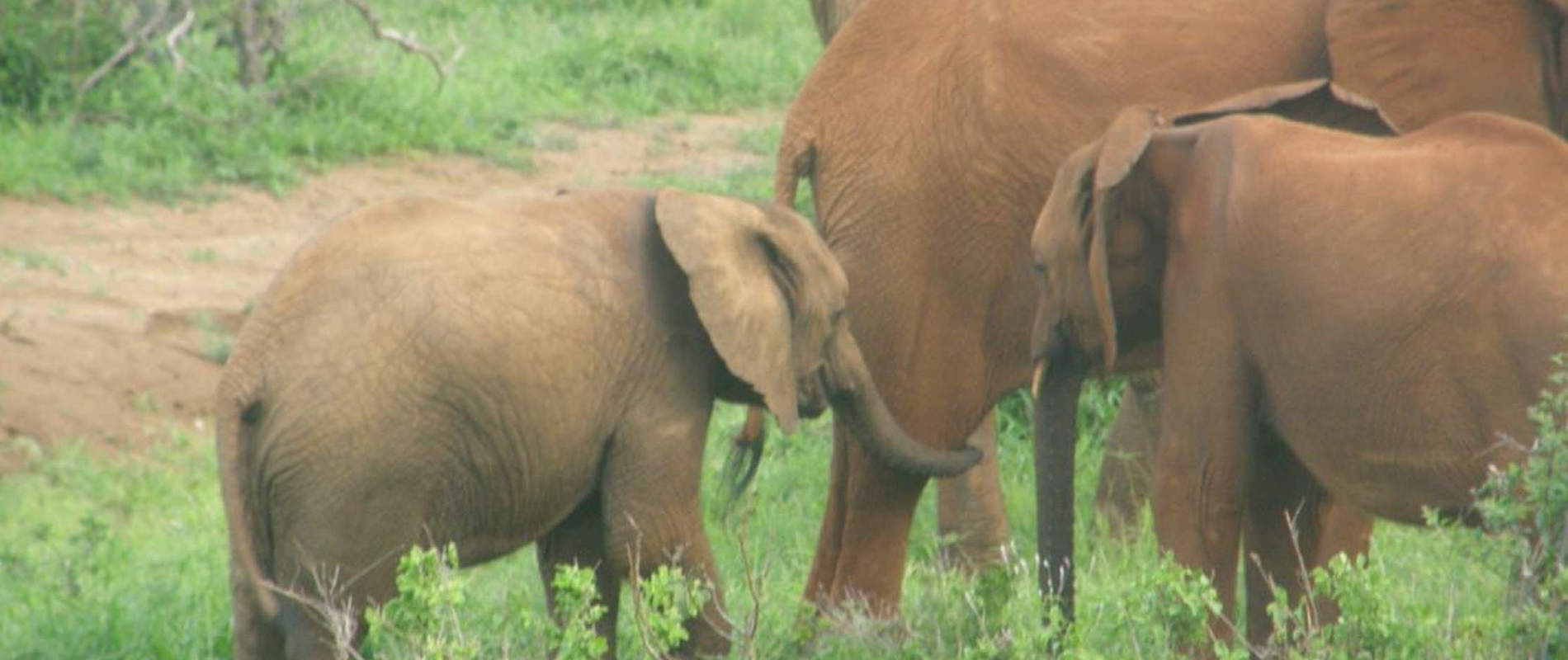Tsavo National Park and its important environs encompass a vast area of 16,000 square miles and is home to Kenya’s largest population of elephants, currently standing at a population of some 11,000 in number
Tsavo National Park and its important environs encompass a vast area of 16,000 square miles and is home to Kenya’s largest population of elephants, currently standing at a population of some 11,000 in number.
Until recently the elephants had to negotiate a single railway line, and one main road, linking Nairobi to the Port of Mombasa in order to traverse freely between Tsavo East and Tsavo West and the ranch lands in between, which are also important feeding grounds and all of which form vital traditional elephant habitat. In the early days the road was murrum and then later tarred, but still with only a moderate amount of traffic. Today replacing the single-line railway is a Chinese-built Standard Gauge Railway line, constructed high on a steep embankment linking the capital of Nairobi to the Coast and Mombasa Port. This raised railway line will soon be completed with plans afoot for the original tarmac road to become a 4 - 6 lane highway, which even today is congested with trucks and traffic from the coast not only bound for Nairobi but further landlocked countries such as Uganda and Rwanda.
The Standard Gauge railway has left some underpasses beneath to accommodate the movement of elephants between Tsavo East and West National Park and the Ranches, and the elephants and other wildlife now have to locate these passes, negotiate them and then navigate across the main road on the other side. Fortunately elephants are highly intelligent, and among those who have mastered these daunting new obstacles are our hand-reared Ex Orphans, now living normal, wild elephant lives amongst Tsavo’ s indigenous elephant population.


The leader of our Ex Orphan group in Voi is Emily, who came into our care at the Trust’s Nairobi National Park Nursery as an orphan of just a few months old. In the fullness of time she was transferred to the Trust’s Voi Relocation Unit and has now been living wild for over ten years, with two of her own wild-born calves and her adopted orphan herd. Within Emily’s herd of Ex Orphans are seven wild- born babies to date with more, we understand, on the way!
During 2016 Tsavo East endured an extremely dry drought period that took its toll on a number of wild elephants who died as a result. Never have the Rangelands been more important than during this time when both browse and food was scarce within the Southern Sector of Tsavo East National Park. We were relieved to learn that during those drought stricken months, Emily and her entourage had managed to access Taita Conservancy along with over 300 wild elephants. This Conservancy, cradled within the Taita mountain ranges, remained abundant with food and water throughout this dry period, and none of the elephants that found themselves there in good time were affected by the drought conditions prevailing in Southern Tsavo. Timing was all important, as making this journey once the dry season had taken hold would have been impossible due to the lack of water between the Park and the Ranchlands, so the herds relay enormously on the wisdom of their elders to negotiate this journey at just the right time in order to be well positioned for the drier months.
With the food and browse plentiful within this area, we received more good news when we heard that Ex Orphan Thoma had given birth to her first wild-born baby whom we named “Thor”. Once the first rains broke finally, Emily’s herd vanished from the Taita Conservancy and were not sighted for a number of days, before, to our absolute delight and relief, they returned on the 1st December to the DSWT Voi stockades situated within the Tsavo East National Park. In order to navigate the recent infrastructure of the SGR railway they would have travelled an estimated distance of around 80 Km from the Taita Conservancy back to Voi. This was a journey made possible again because of all the recently filled waterholes thanks to the welcomed rain.








However, missing from the group was new Mum Thoma, and her baby along with the attendant Nannies, Seraa and Irima escorted by big bull Lolokwe. Judging by the demeanor of Emily and the others, who all seemed happy and relaxed, we felt sure that they knew where the rest were and that they remained safe; their delay was simply because of the young age of Thoma’s calf which necessitated a slower pace. Lolokwe then returned on the 3rd of December, alone, and to our delight on the 8th of December Thoma with her baby Thor, along with Seraa and Irima, turned up at the Voi stockades to share with their erstwhile human family the joy of the beautiful newborn baby Thor. They were enthusiastically welcomed by the dependent Voi orphans too who were delighted with the new addition. It is always humbling how the Ex Orphans return after long absences and behave as if they have never been away, friendly, loving and welcoming.






As we so often assert, following sixty years of rearing orphaned elephants, elephants are just like us, but better than us in many ways – particularly in terms of caring and compassion for others even when very young themselves, as well as their sophisticated means of communication that includes telepathic capabilities; finally also in terms of their memory which far surpasses that of us humans and incorporates a genetic recollection of ancient traditional migratory routes that have existed for millennia.




















































